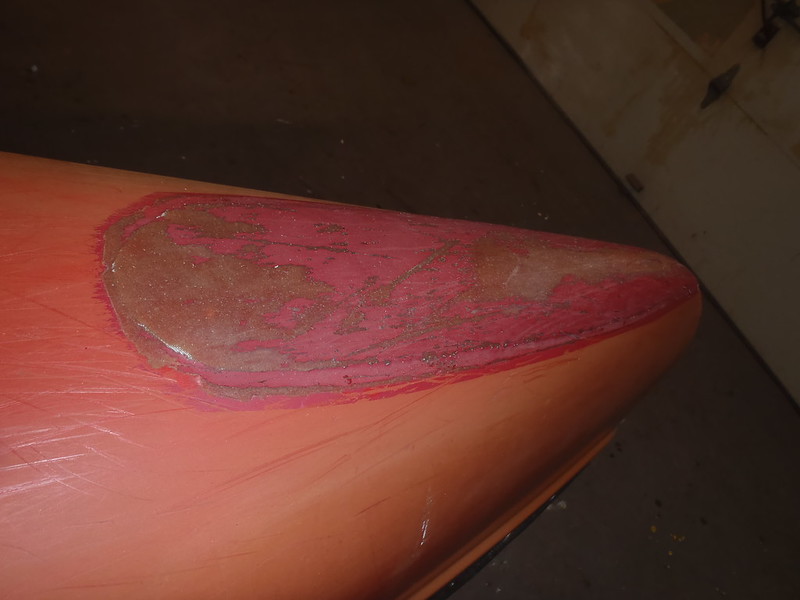Sounds like UV topcoating is less necessary with the addition of graphite powder. Enamel paint topcoats scratch off easily in any case.
Good to know. I’m gonna what the hell paint them anyway.
I understand the question to be limited to protecting skid plates from UV. First, and perhaps somewhat OT, I don't believe in skid plates. I find them ugly, heavy in the worst possible place, the stems, and, most importantly, completely unnecessary even on whitewater canoes. Of course, I don't bash against rocks, ram onto shores, or drag the ends of my canoes along parking lots. (Often.)
Admittedly most of the WW canoes I have worked on had as much wear under the pedestal as on the stems, but I do believe in the value of skid plates.
Unnecessary? Almost every skid plate I have installed has gone over visible wear areas on both Royalex and composite boats. Of course I do occasionally oops bash rocks, drive the bow ashore when necessary, nick the stern dropping over a ledge, and drag portage my canoes up steep banksides and around strainers. (Often.)
For example, the Penobscot skid plates were installed after sufficient vinyl layer scraping had occurred to show where needed. Four or five years later they were worn smooth and into the kevlar felt, and I topcoated them with an epoxy & g/flex mix and some black pigment. Those kevlar skid plates looked like this after another 4 or 5 years abuse.
 PB040023
PB040023 by
Mike McCrea, on Flickr
The heaviest wear area is again apparent, and without some kind of skid plate that wear would be into the RX core.
Recoated with G/flex and graphite powder those have another 5+ years of protection (and I can straighten up the sloppy lines with black paint)
 PB050045
PB050045 by
Mike McCrea, on Flickr
Ugly? Yes, many kevlar felt skid plates are ugly. Even those are less ugly if the initial resin is pigmented to match the hull.
 PB040027
PB040027 by
Mike McCrea, on Flickr
That was a sloppy installation job, using the last dregs of some quickly thickening urethane resin and no peel ply, but at least the kev felt was pigmented red to better match the hull when the scrapes got into the fabric. The UV topcoat of red enamel paint is nearly gone.
G/flex, Dynel and graphite powder skid plates installed over the existing kevlar felt. Once painted these will not look
ugly to my eye, especially on a canoe with black vinyl gunwales and deck plates.
 PB070054
PB070054 by
Mike McCrea, on Flickr
Dynel skid plates, installed with graphite powder and peel ply compression, fit more flush and smooth, even when, as above, installed atop old wearing down kevlar felt skid plates.
We have installed single layer Dynel skid plates on some white bottom boats using white pigment (no graphite powder) and peel ply. You have to look closely to tell they are there. Ugly (vs function) is in the eye of the beholder.
Heavy? Skid plates need not be thick, oversized kevlar felt fuglies, laid on using every drop of urethane resin in the kit.
The last properly sized Dynel & graphite powder skid plates I installed weighed less than 3oz each. I’ll pay that slight weight penalty for my known wear areas, even at the best-kept-light stems.
I've avoided graphite since it's black and is said to heat up in the sun so much that the epoxy softens. IIRC, graphite-bottomed canoes left out in the sun became soft enough that the rope tie-downs left impressions on the hull afterwards.
I have not observed any epoxy softening on skid plated canoes stored out in the sun, or even on canoes racked on the truck while parked baking under the desert sun, although the belly lines are well away from the graphite powder skid plates.
Since the Dynel was hard roller compressed under the peel ply as it set up there isn’t much raised thickness there to leave a rope or strap impression.




